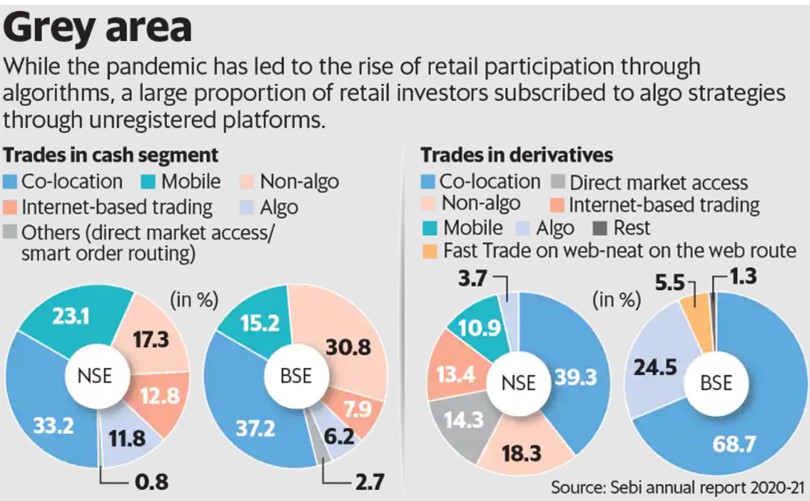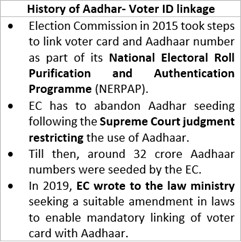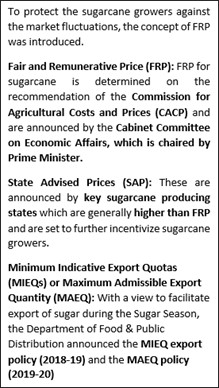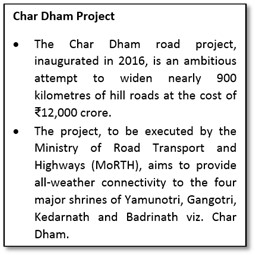Tuesday, 21st December 2021
Futures trading on Inflation
In News
Recently, market regulator SEBI (Securities and Exchange Board of India) ordered a year-long suspension of futures trading in seven key farm commodities to control inflation.
About News
- In order to rein in inflation, the government has suspended trading in futures contracts of some agricultural commodities for one year. These include seven commodities including paddy (non-basmati), wheat, chana, mustard seeds and its derivatives, soya bean and its derivatives, crude palm oil and moong.

- No new contract shall be launched till further orders. In respect of running contracts, no new position will be allowed to be taken. Only squaring up of position will be allowed. These directions will be implemented with immediate effect.
- Inflation has increased considerably in the past several months:
- Consumer Price-based Inflation (CPI) or retail inflation surged to a three-month high of 4.91 per cent in November from 4.48 per cent in the previous month driven by food inflation that etched up to 1.87 percent in November from 0.85 per cent in October.
- The Wholesale Price Index (WPI) inflation also jumped to 14.23 per cent in November as against 12.54 per cent in October
What is Futures trading?
- Futures is a type of Derivative, i.e., it has no independent value and its value is entirely "derived" from the value of the underlying asset. The asset transacted is usually a commodity or financial instrument. Other instruments of derivative market include Forwards, Options and Swaps.
- Futures Contract is a legally binding agreement to buy or sell the underlying security on a pre-specified future date, at a price agreed upon by the buyer and seller, by delivery of the underlying asset for cash.
- Futures trading involves trading in Futures contracts in the derivatives markets.
How does Futures trading affect Inflation?
- A study conducted in 2008 found that futures trading had a destabilizing effect on spot market. It indicated that introduction of futures trading led to increase in price of urad dal significantly. Spot prices of these commodities declined after the ban on futures trading was introduced by the Government in 2007.
- But a similar study conducted by the Reserve Bank of India found that there is no conclusive evidence to show that futures trading in agri-commodities impacts their spot price or leads to food price inflation.
- Commodity prices in India are influenced by other drivers of price changes, particularly demand-supply gap in specific commodities, the degree of dependence on imports and international movements in these commodities.
- The conclusion of the study by the RBI is in consonance with the observation of the Abhijit Sen Committee, which was constituted in 2007 to study the effects of the futures trading on prices of agricultural commodities.
Conclusion
- The SEBI measure makes it tough for importers and traders of edible oils to do business as they extensively use domestic exchanges to hedge their risk.
- Even so, with the government as well as the Reserve Bank of India (RBI)struggling to hold prices of food items to curb inflation, these measures seem to be the last resort.
- If the weather remains benign in the coming weeks, India is on course to have a good harvest season. It is expected that government might lift the ban under such circumstances.
Sources:
- SEBI suspends futures trading in key farm crops
- Centre bans futures trade in seven agri commodities including soy complex
- FAQ on Equity and Currency Derivatives
- No proof of commodity futures trading impacting inflation: RBI
- COMMODITY FUTURES MARKET EFFICIENCY AND RELATED ISSUES: A REVIEW OF EXISTING LITERATURE
Multi-state cooperative societies
In News
Government has ordered to wind up 44 multi-state credit cooperative societies in 9 states, UTs.
About the News
- Centre has decided to amend the Multi State Cooperative Societies (MSCS) Act, 2002 to take action for winding up of 44 multi-state credit cooperative societies in nine states and union territories.
- Complaints have been received for non-repayment of funds against some of the multi-State credit cooperative societies.
- Government has taken action under Section 86 of the Multi State Cooperative Societies (MSCS) Act, 2002 in an attempt to "plug the loopholes in the Act".
What are Multi-state Cooperatives?
Multi-state Cooperatives are entities spread across more than one state. Under the Multi State Cooperative Societies (MSCS) Act, 2002, the administrative and financial control of these societies is with the central registrar, while no state government official can wield any control on them.
- Their area of operation is a multi-network connecting many locations.
- They draw their membership from both states
- They are registered under the MSCS Act.
- Their board of directors has representation from all states they operate.
- At present there are 1,479 registered cooperative societies with Maharashtra having the highest number followed by Uttar Pradesh and New Delhi.
- Credit societies constitute the bulk of registered societies followed by agro-based ones.
- There are 96 multistate cooperative dairies and 66 multistate cooperative banks.
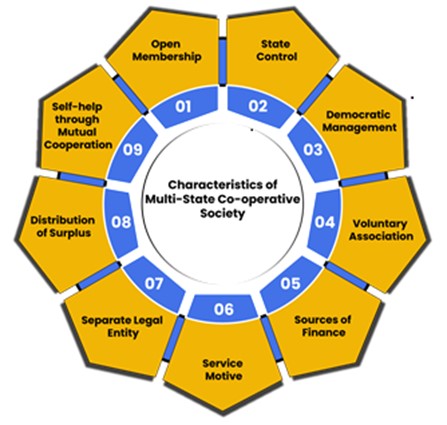
What are the major issues?
Although Cooperatives are a state subject, there are many societies such as those for sugar and milk, banks, milk unions etc whose members and areas of operation are spread across more than one state making their administration a cascading challenge.
- Interference of state authorities into the exclusive control of the central registrar often creates bureaucratic obstacles.
- Lack of checks and balances at multiple layers in the process of multistate societies.
- Unlike state cooperatives, which have to submit multiple reports to the state registrar, multistate cooperatives need not to which hampers transparency in their functioning.
- The central registrar can only allow inspection only after prior intimation to societies which leaves several loopholes.
- Poor on-ground infrastructure for central registrar
- For members of the societies, the only office where they can seek justice is in
- Credit societies often launches ponzi schemes taking advantage of the loopholes of the present act targeting mostly target small and medium holders with the lure of high returns.
- Lack of ground staff necessary for verifying the antecedents of Fly-by-night operators makes it difficult for the government to nab the culprits of fraudery.
What can be done?
- Holding an extensive consultation with experts from various fields: bankers, sugar commissioners, cooperative commissioners, housing societies federations etc.
- Government should amend law to increase the manpower in cooperative governance to ensure better governance of the societies.
- Use of technology to bring in transparency.
- Administrative control of the societies can be vested in the state commissioners to improve day-to-day control and warding off cases of fraud.
- Government can improve transparency by bringing scheme for computerization of Primary Agricultural Credit Societies (PACS) in consultation with various stakeholders, including NABARD and state governments.
Sources:
India’s Missile Capability
In News
The Defence Ministry has encouraged scientists to work towards developing hypersonic missile technology.
Brief History
- Pre- Independence: In the pre-independence era, Mysore ruler Hyder Ali started inducting iron-cased rockets in his army in the mid-18th century. By the time of the death of Tipu Sultan, his son, a company of rocketeers was attached to each brigade of his army, estimated at around 5,000 rocket-carrying troops.
- Post-Independence: At the time of Independence, India had no indigenous missile capabilities.
- The government created the Special Weapon Development Team in 1958 which later expanded to Defence Research and Development Laboratory (DRDL) in 1962.
- In 1972, Project Devil was initiated for the development of a medium range Surface-to-Surface Missile. The development of components / systems for Project Devil formed the technology base for the future Integrated Guided Missiles Development Programme (IGMDP).
Current Status of India
India is considered among the top few nations with respect to designing and developing missiles indigenously.


Source:
Image Source:
Discovery of Radium
On December 21, 1898, Radium was discovered by the husband-and-wife team of Pierre and Marie Curie. The Curies and Becquerel shared the 1903 Nobel Prize for Physics for their associated research involving what the Nobel committee referred to as the "radiation phenomena." Thus, Marie Curie became the first woman recipient of a Nobel Prize, nosing out Bertha von Suttner (peace) by two years. Marie Curie received a second Nobel Prize in 1911, this time for chemistry. She spent the rest of her life in science, much of it promoting the healing properties of radium. Curium, element 96, is named in honor of Pierre and Marie Curie. Francium, element 87, is named for France, site of the Curie Institute where it was discovered.
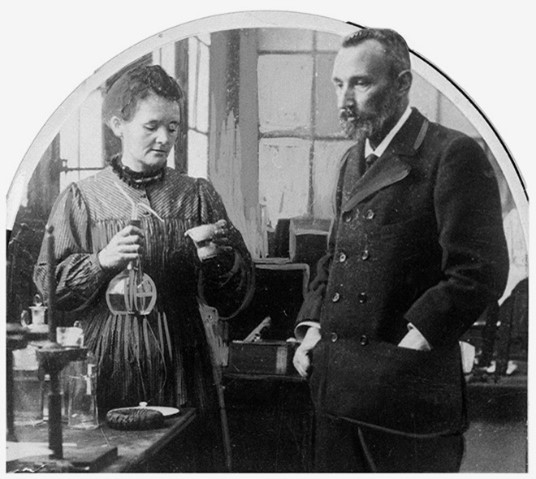
Source:
Age of Marriage
In News
The Union Cabinet has recently taken the decision to raise the legal age of marriage for women from 18 to 21 years, through the introduction of the Prohibition of Child Marriage amendment Bill, 2021. As of now, the legal age of women to get married is 18 while that for men is 21 years.
The Bill has been sent for further scrutiny to parliamentary Standing Committee.
Why the government wants to increase Age of Marriage for Women?
- Health of Women: Girls marrying below the age of 18 often face the higher risks of unwanted pregnancies, pre-term births and various Sexual Transmitted Diseases (STDs) and are made prone to reproductive and sexual morbidities.

- Opportunity for women: On social front, this will lead to social benefits like lowering Maternal Mortality Ratio (MMR) as well as improvement of nutrition levels while on financial front opportunities will be opened up for women to pursue higher education and careers and become financially empowered, thus resulting in a more egalitarian society in thinking.
- Autonomy of Women: The legal difference in marriage age of men and women often undermine the autonomy and agency of young women. It also promote the prejudiced idea that women are more mature than men of the same age and, hence, should be married sooner.
- End Discrimination: The differential age limit also leads to de-facto discrimination as it leads to a hierarchy of power in the relationship.
Laws related to Minimum age of Marriage
- A minimum age of marriage essentially aims to outlaw child marriages and prevent the abuse of minors. For bringing in minimum age of marriage, the age limit in the Prohibition of Child Marriage Act will have to be changed, followed by necessary changes in personal law.
- The Special Marriage Act, 1954 and the Prohibition of Child Marriage Act, 2006 also prescribe 18 and 21 years as the minimum age of consent for marriage for women and men, respectively.
- Under the Child Marriage Prevention Act, any marriage below the prescribed age is illegal and the perpetrators of a forced child marriage can be punished.
- Personal laws of various religions that deal with marriage have their own standards, often reflecting custom.
- For Hindus, The Hindu Marriage Act, 1955 sets 18 years as the minimum age for the bride and 21 years as the minimum age for the groom.
- This is the same for Christians under the Indian Christian Marriage Act, 1872 and the Special Marriage Act.
- In Islam, the marriage of a minor who has attained puberty is considered valid. Muslim law is a codification of the Shariah law.
What can be the Reverse Implications of raising the marriage for females?
- Tends towards being Coercive: A legislation would push a large portion of the population into illegal marriages. The law would end up being coercive, and in particular negatively impact marginalised communities, such as the SCs and STs, making them law-breakers.
- Restricting rights of Women: The laws under POCSO and PCMA Act have majorly been used by parents against eloping daughters against their will. The increase in age will result in restricting the freedom of girls and will have no-say in their marriages due to parental control. The elementary rights under child rights convention right to be heard and opinion will also be denied till age of 21 beyond adulthood.
- Mismatches between Laws: The Prohibition of Child Marriage Act does not contain any provision that explicitly says the law would override any other laws on the issue. But, there is discrepancy in the letter of the law between the Prohibition of Child Marriage Act and Muslim law on the minimum age of marriage.
- For example, although the marriage of a 16-year-old girl deemed to have attained puberty is not considered invalid in Muslim law, it would be a child marriage under the Prohibition of Child Marriage Act.
But only increasing the minimum of marriage will not be enough for women empowerment
- Punitive paternalism: It provides an ideal example of punitive paternalism as by only increasing the age through legislative measure, the government escapes from its responsibility for rising child marriage cases in guise of enacting legislative measures only.
- Persistent norms: Marriage decisions in India are often guided by factors such as dowry considerations (a younger bride would mean a lower dowry), a fear of loss of family honour (the stigma of an unmarried woman losing her virginity) and fear of “what will people say” if the woman remains unmarried. All these considerations are strong deterrents to conforming to the current child marriage law.
- Promising strategies: Over this decade, India has witnessed steep declines in both fertility and child marriage. These changes have taken place not because of any legislation or incentives, but likely because of more accessible schooling, skilling, health and other entitlements, that have, on their own, led to a radical shift in norms and aspirations for girls, and a willingness to invest in them and delay their marriages.
- Poor quality and access to education directly causes early marriage to occur: Girls end up dropping out of school due to the poor quality of education, lack of infrastructure like toilets, prevalence of sexual harassment, or poverty – which then leads to early marriage.
- The existing law governing child marriage – PCMA – is not very effective on the ground: The minimum age of marriage for girls has been 18 years since 1978. Despite the steady decline of child marriage rates in India, the country continues to have the highest absolute number of underage brides in the world – despite the existence of the Prevention of Child Marriages Act (PCMA), 1978 and 2006.
- In 2018, only 501 cases were booked under the PCMA Act, even though data suggests that one in four women in India is still getting married under the age of 18.
- Early marriage is not the reason for poor nutrition and health of mothers: Poverty leads to undernutrition, anaemia and neglect of health care which are key to maternal health. Therefore, improving access to nutrition, free and accessible healthcare and tackling poverty are the most important routes to improve maternal nutrition and health.
Way Forward
- It is the need of the hour that holistic approach of better education with strict implementation of child marriage laws with regulating mechanism should be encouraged for curbing the mushrooming menace of child marriages in India.
- In June 2020, the Ministry for Women and Child Development set up a task force, called the Jaya Jaitly committee, to look into the correlation between the age of marriage with issues of women’s nutrition, prevalence of anemia, IMR, MMR and other social indices. Apart from recommending for increasing the age of marriage, the task force has also recommended:
- The government to look into increasing access to schools and colleges for girls, including their transportation to these institutes from far-flung areas. Skill and business training has also been recommended, as has sex education in schools.
- The committee said these deliveries must come first, as, unless they are implemented and women are empowered, the law will not be as effective.
- The committee has further recommended that an awareness campaign be undertaken on a massive scale on the increase in age of marriage, and to encourage social acceptance of the new legislation, which they have said would be far more effective than coercive measures.
Conclusion: Complex paradoxes like these are the hallmark of our society. They cannot be addressed by a legal fix, particularly one that will be very hard to implement. Instead of criminalising our youth, the government must take concrete steps to really empower women. If they are truly in charge of their own lives — through affordable education, meaningful and decent employment opportunities — they will be able to make better decisions about whether, when and whom to marry.
Question: The age of marriage for women is a critical matter of the Indian society. Discuss in the context of the Bill on increasing the age of marriage for women.
Sources:
- Raising legal age of marriage for women: the law, the reasons and the criticism
- On raising marriage age for girls to 21, Chidambaram has an advice
- Explained: Legal implications of enforcing age of marriage
- 5 Reasons Changing The Minimum Age Of Marriage Is A Bad Move
- Should India raise the minimum age of marriage?
- Should the age of marriage for women be raised to 21?
- Age of Consent for Marriage In India
- Raising marriage age won’t lead to women’s empowerment
- Govt mulling revising legal age of marriage for girls
2,300YO Buddhist site
This is the image of 2,300YO Buddhist site in AP's Kodavali under threat from mining. Kodavali Buddhist site comes from the golden era of Buddhism in coastal Andhra Pradesh. The three centuries preceding and after CE witnessed a phenomenal rise and growth of Buddhist institutions in Andhra Pradesh. Kodavali is one of the 50 sites so far discovered in the erstwhile Andhra Pradesh. Historian Robert Sewell and archaeologist Alexander Rea are credited with discovering the site at Kodavali in the 1880s where the first Buddhist rock edict in Brahmi script was also found. The inscription has a reference to a local king called Chandasati who offered gifts to the monastery and constructed wells for the monks. The inscription can be dated to the 2nd Century CE. Some claim the site came into existence between the 3rd and 2nd centuries BC.
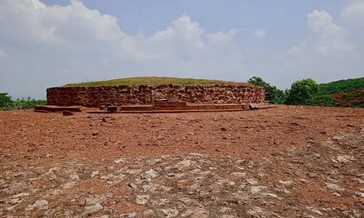
Source:
Indian Desert Cat
- Context: An Indian Desert Cat has been spotted for the first time in Madhya Pradesh’s Panna Tiger Reserve (PTR) recently.
- The Indian Desert Cat (Felis silvestris ornata) also known as the Asiatic Wildcat or the Asian Steppe Wildcat is found in deserts and can survive without water.
- It rests during daytime and hunts during nights when it roams long distances in search of prey that include smaller animals and birds.
- The toes of the species have cushion like hair which help it balance the fluctuating desert temperatures.
- The species is categorised as Least Concern in the IUCN Red List and occupies of CITES Appendix-II and Schedule-I of the Wildlife Protection Act.
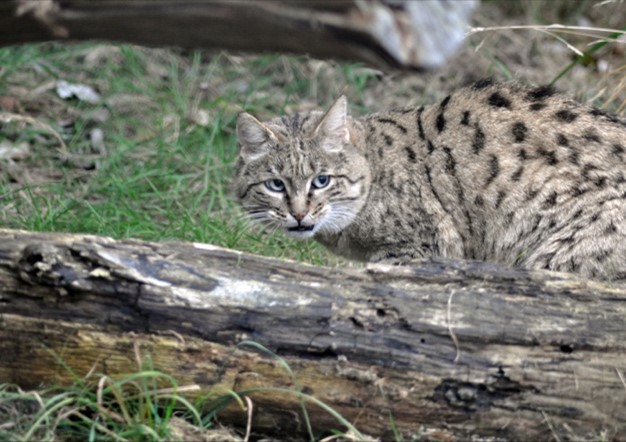
Source:
Image Source:
Tag for being breastfeeding-friendly
- Context: A new initiative called “Baby Friendly Hospital Initiative (BFHI)” to certify hospitals as ‘breastfeeding friendly’ has been launched recently.
- This will now help mothers identify “breastfeeding-friendly” hospitals before they give birth.
- The Breastfeeding Promotion Network of India(BPNI) in collaboration with Association of Healthcare Providers of India (AHPI), which comprises more than 12,000 private hospitals, has launched this initiative.
- The certification process involves two stages:
- The first stage includes self-assessment by a hospital
- This is followed by an external assessment by an authorised appraiser who interviews doctors, nurses and patients as well as reviews different practices and training of staff.
- Provision of mother’s breast milk to infants within one hour of birth ensures that the infant receives the colostrum, or “first milk”, which is rich in protective factors.
- According to the NFHS survey (2019-2021), while there were 88.6% institutional births, only 41.8% of infants were breastfed within the first one hour.
- Many States such as Maharashtra, Karnataka, Gujarat, Uttar Pradesh, Jharkhand and Chhattisgarh have shown a decline in the proportion of children breastfed within the first hour.
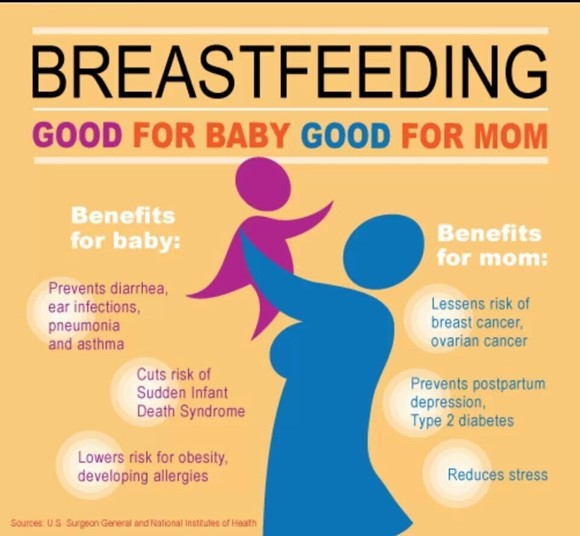
Source:
- Private hospitals to be tagged for being breastfeeding-friendly
- Hospitals set to get ‘breastfeeding friendly’ tags now
Image Source:
Mormugao - Stealth Destroyer
- Context: Indian Navy's indigenous stealth guided-missile destroyer Mormugao went on its maiden sea sortie recently.
- It is India’s second indigenous stealth destroyer of the P15B class that incorporates several niche indigenous technologies.
- It has been built at Mazagon Dock Shipbuilders Ltd (MDSL).
- The destroyer is expected to add significantly to the capabilities of the Indian Navy, which has recently commissioned INS Visakhapatnam and the fourth stealth Scorpene class submarine INS Vela.
- The Ship’s name has been dedicated to the maritime state of Goa to enhance the bonding between the Indian Navy and the people of Goa and to link the ship's identity permanently to the crucial role the Navy played in nation-building.
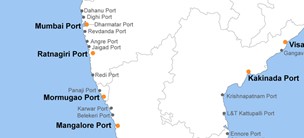
Source:
- Mormugao, a stealth destroyer, sails for maiden sea trials on Goa Liberation Day
- Indian Navy's second indigenous stealth destroyer sails for maiden sea sortie
Image Source:
Bullock Cart Racing
- Context: The Supreme Court has recently allowed Maharashtra to hold cart racing event, stating that there was no reason to disallow it when similar sports were going on in other places across the country.
- Bullock cart and animal racing events are old Indian traditions which help in preserving superior breeds of animals for propagation of races and mating.
- Bullock cart races were banned in Maharashtra after the Supreme Court declared that the race is violative of the provisions of Prevention of Cruelty to Animals Act 1960 in 2014 on the grounds that it causes pain and suffering to the bullocks.
- After the Tamil Nadu government enacted a law to regulate jallikattu (taming of the bull), there was a demand to revive bullock races in Maharashtra.
- The SC opined, “One country, one race, we need to have uniformity and there has to be one rule. If the races are going on in other states, why should it not be allowed by Maharashtra”.
Source:
- SC allows Maharashtra’s bullock cart racing: ‘We need to have uniformity’
- Explained: Supreme Court allows bullock cart races in Maharashtra, here is why
Image Source:
What rising inequality means:TH
Essence: The article talks about the rising inequalities caused due to inappropriate redistribution of income along with absence of measures discouraging undue accumulation of income. All of this is leading to concentration of the wealth in private hands with little resources left for the government to act. Due to this the government becomes handicapped to act on inequality aversion measures and ensuring fair distribution of wealth.
To improve the situation, focus needs to be shifted on reducing the gaps in capabilities domain like education and differential endowments that could lead to inequalities. It is worth noting that there is increase in the number of billionaires in the world while billions don’t have the means for a decent life.
Why you should read this article?
- To understand the reasons for rising inequalities in the world.
- To understand the level of disparities across different nations.
- To understand the steps that could be taken to rectify the issue.
- The article provides data that could be used in paper GS-3, Poverty and Inequality, Economy.
Source:
Why the Russia-West equation matters to India: IE
Essence: The editorial focuses on Russia’s ties with the west and how the Asian geo-politics of major stakeholders like China and India move in synchrony with the same. Erstwhile USSR had 2 fronts- strategic and ideological front- possibly because of which, it couldn’t sustain its alliance with the west post World War 2. The new effort to join forces with Europe is a request by Russia that ensures that NATO forces do not extend further east in Europe, name Ukraine and Georgia.
It is possible that there’d be an extended peace in Europe. Despite having resources, USA can’t afford to indulge in 2 wars- China (Asia) and Russia (Europe). Russia, though, wants to extend friendship with China, it wants peace in its neighborhood as a matter of priority.
For India to take independent calls internationally has been tough when major powers like USA, Russia and EU are at loggerheads but now when the equation amongst them aligns well, it matters well to India. It is a major victory for Asia-Pacific geo-politics that the relationships in the west are getting influenced by the emerging international order in the east.
Why you should read this article?
- To understand the history of relationship between Russia, Europe and USA.
- To know the significance of reliance amongst western powers and how China and India have influence over them.
Source:
Why WHO’s pandemic treaty is a smokescreen: A temporary waiver of intellectual property and a wider spread pharma manufacturing matter: TOI
Essence: The World Health Assembly's recent Pandemic Treaty has sparked debate over its usefulness in resolving shortcomings in enhancing access to life-saving medications and diagnostics. According to different academics, this will not be achievable without political will and readiness to distribute capacities away from rich countries and toward poorer regions of the world. International Health Regulations (IHR) already allow for global public health responses to infectious disease transnational spread, but they need to be revised and expanded in scope. Because lack of political will on the part of rich countries to share key technology and manufacturing know-how and to remove intellectual property obstacles causing inequity in immunisation. Though the primary sponsors of the pandemic treaty block a TRIPS waiver proposal before the WTO, it is again forwarded by India and South Africa. Waiver will allow medicines, vaccines, and other critical tools to be produced more broadly, hence boosting access and allowing millions more people to be vaccinated. For this we must strengthen IHR in order for this to happen.
Why should you read this article?
- To have a better understanding of the Pandemic Treaty of the World Health Assembly.
- Recognize the importance of bolstering the IHR.
- Determine what efforts should be made to address this problem.
Source:
Fight against Patriarchal Mindset
Background
- Life for women is an endless struggle against a patriarchal system where child marriage is rampant and education is not a priority.
- A girl, named Jyothi took up the initiative to transform the landscape of her village by making sure that every girl in her village gets the chance to study like she did.
How did Jyothi achieve this feat?
- Jyothi was one of the first girls in her village to complete her education and the only girl from the area to go to college. Having completed her education, Jyothi gained a deep understanding of why other girls in her village needed to get the chance to do so as well.
- The school in her village only went up till Class 5, so she would travel on foot to the closest one, located around 3-4 kilometres away, every day so she could continue studying.
- Jyothi started work with an NGO and conducted different kinds of training programs and workshops to help girls understand gender-discriminatory behaviors and their negative impact on the socio-economic and cultural potential of society.
- The primary objective of working with the youth is to help them become catalysts of change over time.
Quote: “When women are educated, their countries become stronger and more prosperous.” Michelle Obama.
Sources:
Share the article
Get Latest Updates on Offers, Event dates, and free Mentorship sessions.

Get in touch with our Expert Academic Counsellors 👋
FAQs
UPSC Daily Current Affairs focuses on learning current events on a daily basis. An aspirant needs to study regular and updated information about current events, news, and relevant topics that are important for UPSC aspirants. It covers national and international affairs, government policies, socio-economic issues, science and technology advancements, and more.
UPSC Daily Current Affairs provides aspirants with a concise and comprehensive overview of the latest happenings and developments across various fields. It helps aspirants stay updated with current affairs and provides them with valuable insights and analysis, which are essential for answering questions in the UPSC examinations. It enhances their knowledge, analytical skills, and ability to connect current affairs with the UPSC syllabus.
UPSC Daily Current Affairs covers a wide range of topics, including politics, economics, science and technology, environment, social issues, governance, international relations, and more. It offers news summaries, in-depth analyses, editorials, opinion pieces, and relevant study materials. It also provides practice questions and quizzes to help aspirants test their understanding of current affairs.
Edukemy's UPSC Daily Current Affairs can be accessed through:
- UPSC Daily Current Affairs can be accessed through Current Affairs tab at the top of the Main Page of Edukemy.
- Edukemy Mobile app: The Daily Current Affairs can also be access through Edukemy Mobile App.
- Social media: Follow Edukemy’s official social media accounts or pages that provide UPSC Daily Current Affairs updates, including Facebook, Twitter, or Telegram channels.

